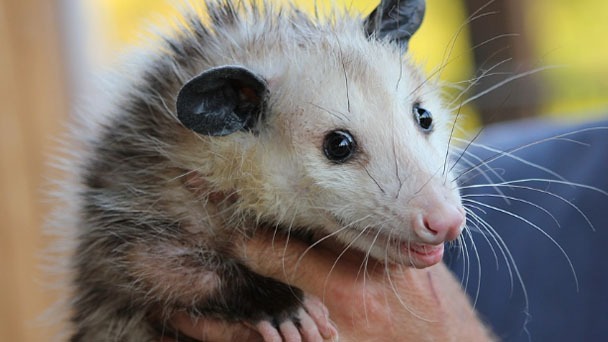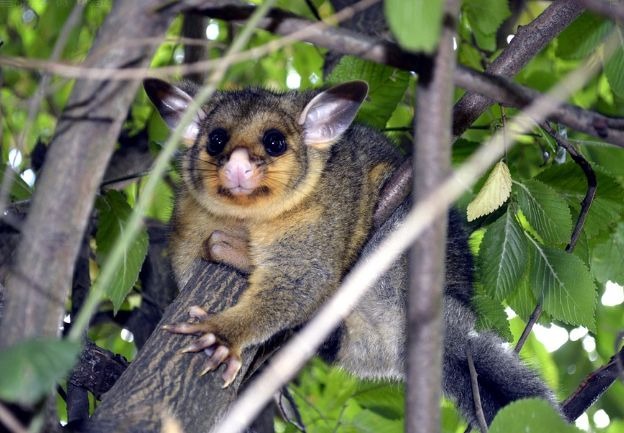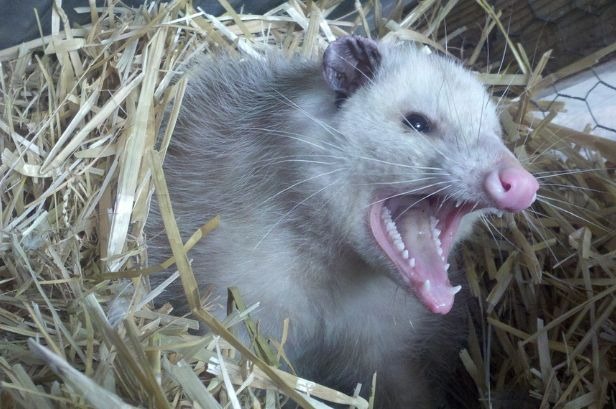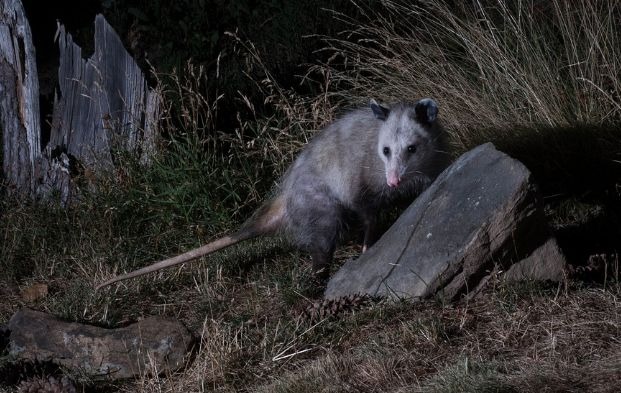How Do You Get Rid Of Possums - Possum Control Guide
Written by Ivy
Mar 25 2023

Possums and opossums can be useful in the yard, but the thought of these rat-like animals prowling around your property at night may not always be pleasant. Here are some useful possum removal suggestions and indications that you should seek professional assistance.
Quick Look to Get Rid Of Possums:
- Trapping
- Habitat Management
- Repelling
- Exclusion
- Professional Wildlife Control
Are Possums Hard to Get Rid Of?

Long-term advantages for both you and the animals result from keeping opossums off your property. An opossum's health suffers when it consumes too many human foods, such as those found in the trash, because they are a wildlife species. Decrease the possibility of these animals entering your yard due to the slight risk of disease or attack.
The good news is that it won't take much work to get rid of and keep out this animal from your yard. The best course of action is to leave an opossum alone if it enters your yard. It's likely to relocate in the next two or three days.
There are steps you can take to get rid of opossums if, for example, one appears to have made a permanent home beneath your patio or if you wake up each morning to find your garden destroyed. These include:
- Removal: For the sake of both the safety of your family and the opossum, an opossum inside your home should be immediately released outside. Depending on the situation, this might entail guiding the opossum through an open door or a more involved trapping process. Another option is to take an opossum out of its den on your property and move it to a more natural setting.
- Prevention: Rather than making opossums leave your property to find food and shelter, changing the habitat in your yard that attracts them to the region and addressing the points of entry will successfully keep opossums away from your property.
Whether an opossum is in your yard or inside your house, you shouldn't kill it. This is not only cruel, many states have made it against the law. These animals are frequently protected by wildlife legislation because of the role they play in the environment. Instead, rely on non-harmful, humane approaches to opossum removal.
Most homeowners can keep opossums at bay on their own, without the aid of a professional. You might only need a few new items, some basic handyman abilities, and a short amount of time, depending on your strategy and what attracts opossums to your area. Opossums require ongoing wildlife control methods to reliably keep them out, but these will take little time.
However, possums that have entered your home present a bit of an emergency. These creatures might be more dangerous or destructive when kept indoors. If you're removing an opossum from your property or one that has gotten inside your home on your own, proceed with caution. This is a wild animal that sometimes exhibits bizarre behavior. Additionally, you need to be aware of any local laws that may apply to the capture and release of opossums.
For these kinds of urgent problems, it is frequently preferable to rely on a licensed and insured wildlife control specialist for removal for both legal and safety reasons.
Read More: Do Possums Eat Snakes - Interesting Facts You Should Know
How to Get Rid of Possums Fast
Opossum removal typically takes a couple of days, whether you hire a pro or dedicate the necessary time to do it yourself. This gives you enough time to set up traps or wait for any opossums that are present to leave before taking any necessary preventative action. The opossum, the size of your property, and how much work is necessary to get rid of things that draw animals will all affect how long it takes to get rid of them.
You must pay close attention to areas where opossums are likely to congregate if you want a quick and efficient DIY removal. Opossum removal will be nearly complete in a matter of days if extensive opossum prevention is used. Exclusion should effectively keep them out, but there is still a chance that one might occasionally wander onto your property.
The different methods to remove and prevent opossums, which can be used individually or in combination with other removal methods, include:
- Trapping: Using a trap and bait to capture an opossum is a technique that is both commercial and do-it-yourself friendly. After that, the opossum is let go in a secure area. Waiting for the opossum to enter the trap may make the trapping process take a few days.
- Habitat management: Opossums look for food in fruits, vegetables, small animals, and animal carcasses. They also require a protected location where they can erect a makeshift den. If you have any of these, opossums might be enticed to stop in your yard. Opossums are less likely if these areas are located and eliminated.
- Repelling – By utilizing scents and tastes that opossums find repulsive, natural and chemical repellents can be used in addition to other opossum control techniques. These work to deter opossums, not because they are harmful. Although they frequently need to be frequently reapplied to remain effective, repellents typically start working right away.
- Exclusion: You can prevent opossums from entering your home and yard by physically sealing any openings that they could use to get in. For securing indoor spaces, this is especially helpful.
- Professional wildlife control: To solve the problem of opossums, a professional will use trapping, removal, exclusion, and other techniques. This approach is frequently the quickest because it takes the guesswork out of the equation for DIYers trying to figure out what attracts opossums to their yard.
You will need to get rid of the animal right away in some circumstances, such as when it is sick, is aggressive, or is inside on your property. These situations are best left to experts because they could be harmful to your family or pets. Emergency wildlife control services are available in your area, or you can call the fire or police department if a wild animal is putting you in immediate danger.

How to Identify a Possum Infestation
There are a few common signs to watch out for if you think there are possums in your house or yard.
Evidence of Possums Feeding
Possums, as was previously mentioned, are opportunistic omnivores, so the foods they consume may differ from those they would find in the wild. Possums typically stick to plants, flowers, vegetables, and fruit; however, if they are close to your home, they might try pet food and other household items.
Search for altered trash cans or gardens when looking for evidence of possums feeding. During the night, look in the dog and cat food bowls for signs that a possum was nearby. Look around any large bowls of water for possum signs as well.
Possum Tracks
Possums have their own tracks and footprints, just like all other animals. Their human-like front paws and long back feet can be used to identify their footprint. If the sand is soft enough or they sat down for a while, you might be able to see their tails.
Follow the possums' path when searching for them, as well as where they were. For their nightly routines while in your home or yard, this can help establish a pattern.
You'll be able to determine where they're coming from and what stops they make throughout the night, for instance, by observing signs that the possum moved from the garage to the dog food bowl and then to a small pond. By doing so, you'll be able to make adjustments that might spook the possums away from your house and yard.
Possum Droppings
Another sign of a possum infestation is determining whether any droppings you find are from possums. Possums come in a range of hues, such as dark brown and green, and their small, oval-shaped droppings are one of them.
However, the size is the main distinction between koalas and possums: if the dung is large, about the size of an olive, it is a koala; if it is small, only about 1 centimeter long, it is a possum.
Strange Sounds
One sign you'll pick up on right away is a possum's call. They made a mixture of growls, chitters, and hums, which are frequently unsettling to hear out of the blue. Many people assert that hearing a possum outside of their house or in their yard puts them closer to a predator than hearing a small possum.
Visible Damage to Property
You'll frequently observe damage like any other wild animal in a house. Possums climbing through the upper portions of your home or from biting or scratching your property are the main causes of this damage. If a possum is living inside your home, such as in the attic, you will notice damage near their nesting and sleeping areas as well as any places they have ventured where they weren't careful.
Small areas that people might not be able to access and areas near food or pet kibble are two additional places you might want to look for damage.
Lawn Damage
With a possum infestation, damage to your home's exterior is also a possibility. Inspect your lawn for evidence of damaged or uprooted grass, trees, or bushes. Check inside any sheds or similar structures you may have for any damaged or missing items. Check your garden, if you have one, for evidence that animals have been digging through the soil and eating plants.
Attacking Pets Or Livestock
The last and most dangerous sign is when possums attack your pets or livestock (such as chickens, cows, sheep, and others). Your animals will most likely have wounds and require treatment, whether or not you can see them. If this is the first indication that you have a possum issue, use the other indicators of a probe to see if possums are the root of the issue.

Possum Vs Opposum
Let me begin by stating that, although technically an oposum, the terms "possum" and "opossum" are frequently used synonymously in North America.
To be clear, possums are native to or found close to Australasia. They resemble squirrels in appearance and have bushy tails. They are opportunistic omnivores, which means they eat plants and fruits but may also consume bugs, eggs, and other things. They frequently inhabit trees and other elevated spaces.
On the other hand, opossums are native to North America. Opossums are scavengers, which means they eat anything, including trash, plants, and bugs. They have a tail that resembles a rat. Additionally, both have unique responses to danger. Possums try to avoid danger because they live in trees and only lash out when cornered. Opossums, on the other hand, will hiss and play dead.
Their geographic separation is the most significant difference. You have a possum if you reside near or in Australia, New Zealand, or New Guinea.
Having said that, all of the issues and solutions I discuss below apply to both marsupials. I am primarily referring to the North American Possum, though.
Final Thoughts on Getting Rid of Possums
Possums may only visit your home or yard once, but when they do, you need to take quick action to protect your belongings, pets, and property.
Fencing and other preventative measures can help reduce the likelihood of possum infestation. If you do have a possum problem, you can always turn to animal repellents, trapping and removal, or expert assistance for help.
Latest Updated
- Do Possums Eat Snakes - Interesting Facts You Should Know
- How Do You Get Rid Of Possums - Possum Control Guide
- Propagation Mmethods of Wax Mallow
- How to Propagate Persian Violet with Simple Steps
- The Propagation Methods and Precautions of Tagetes Patula L
- Sedeveria Markus Profile - Pictures, Features & Habits
- Cymbidium Tigrinum Profile - Flower Language & Habits
- Stromanthe Triostar (Stromanthe Sanguinea) Profile: Facts, Care & Growing Guide
- Metasequoia Glyptostroboides (Dawn Redwood) Profile
- Can You Divide Peace Lily Plants - When Should You Split
Popular Articles
- Winter maintenance of Antirrhinum Majus
- How to Grow Terminalia Mantaly Tree
- How to Grow and Care for Crossostephium Chinense
- How to grow Antirrhinum Majus in spring
- Peristeria Elata (Dove Orchid) Profile: Info & Care Guide
- Underwatered Snake Plant (Sansevieria Trifasciata) - Signs And How To Fix
- How to Care for Brazilian Jasmine Plant (Mandevilla Sanderi)
- Rosa Chinensis (China Rose): Plant Growing & Care Tips
- How to Grow & Care for Graptopetalum Purple Delight in Summer
- How to Care for Baby Sun Rose (Aptenia Cordifolia)